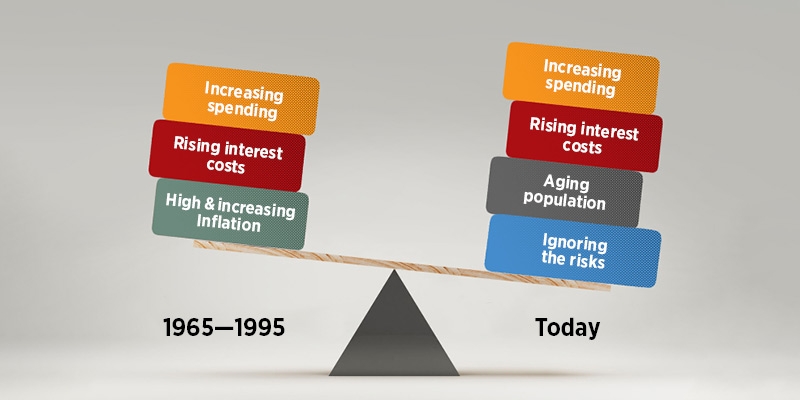Federal Deficits Then and Now: Is Canada Repeating the Fiscal Mistakes of 1965 to 1995?
— Publié le 20, August, 2019

Summary
- From 1965 to 1995, the Canadian federal government repeatedly ran deficits, accumulating debt, a habit that culminated in the near crisis of the mid-1990s.
- After a period of reform beginning in 1995, Canada returned to deficits in 2008/09.
- While on track to balance the budget in 2015, the newly elected government introduced new and additional discretionary spending that brought the budget back into deficit.
- The 2018 Long-term Fiscal and Economic Projections estimated the federal government will run deficits until 2040, assuming no recession.
- Many of the factors that contributed to the deficits of the mid-1960s to the mid-1990s, such as the risk of actual revenue being below budgeted projections, actual program spending exceeding budget, and higher than expected interest costs are all risks present today.
- Additionally, while demographics played a positive role during the period from the mid-1960s to the mid-1990s, namely in the form of increasing labour-market participation, they are now a headwind to economic growth and government finances as labour-force participation declines.
- A historical review of budget speeches illustrates a stark difference between governments of the past and today. From 1965 to 1995, 24 budget speeches explicitly identified expenditure control as a priority of the government with many acknowledging the link between overspending and deficits. Today, the government does not recognize increased spending and deficits as a problem or even a risk.
- The combination of similar risk factors plus demographics, as well as a failure even to acknowledge the current risk to federal finances—let alone a problem—means the federal government is clearly in danger of repeating the mistakes of the mid-1960s to the mid-1990s.




